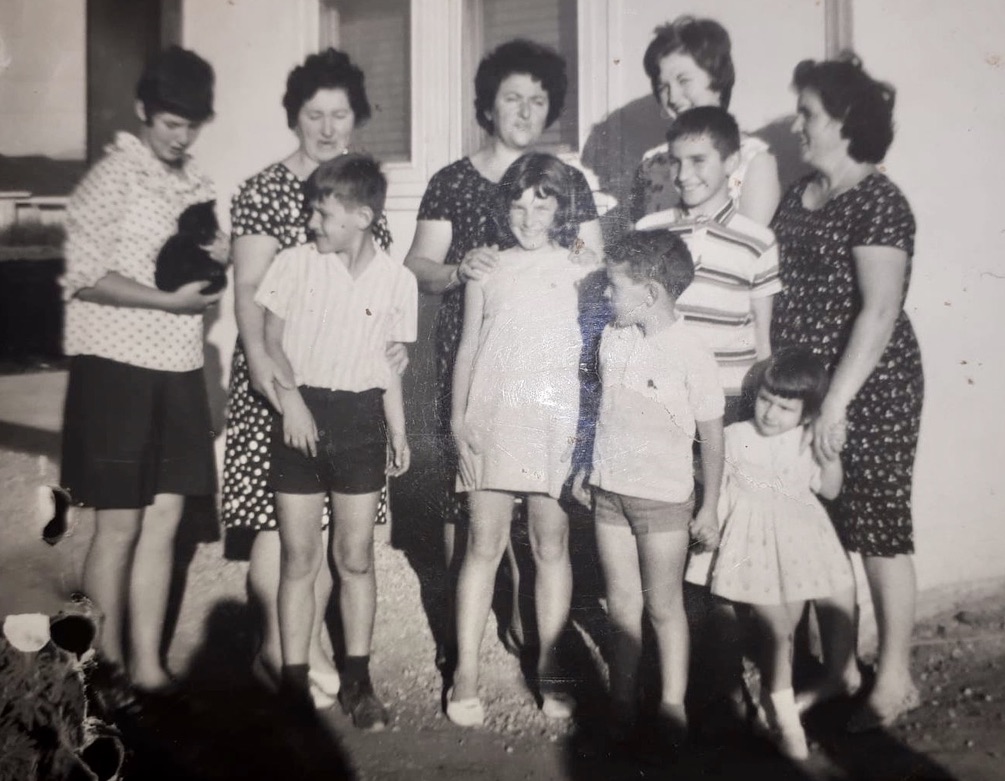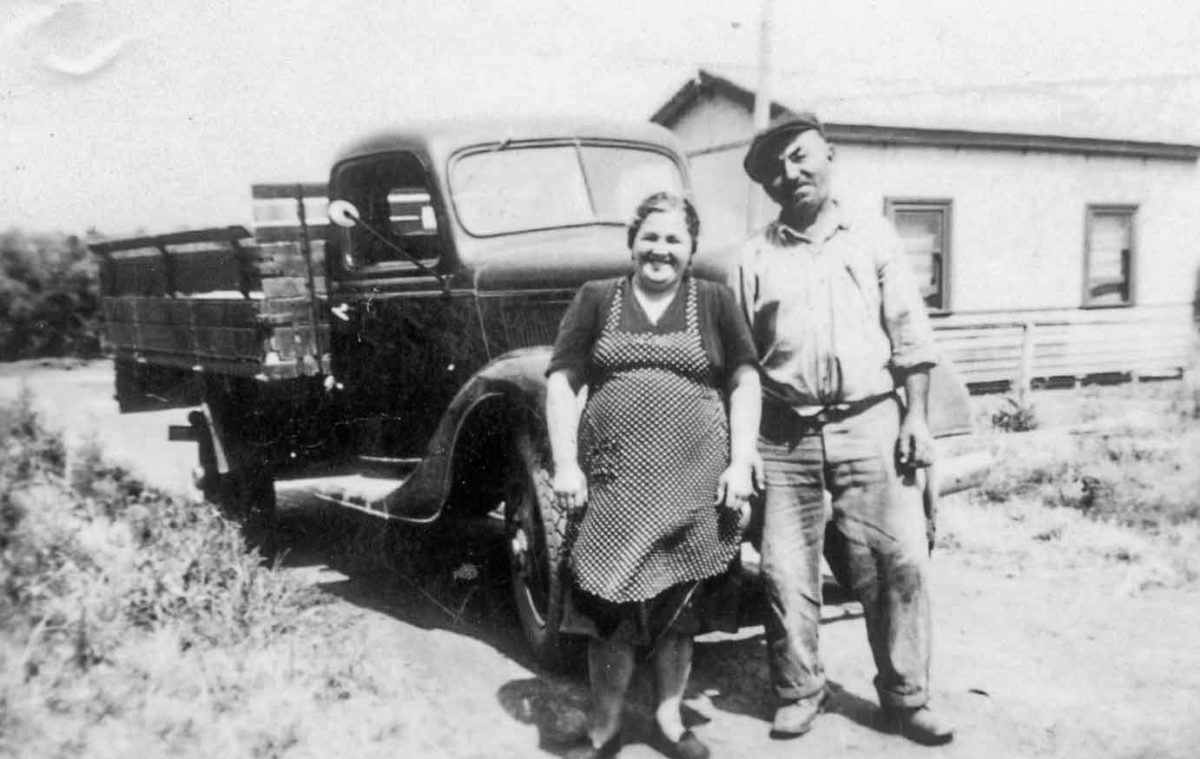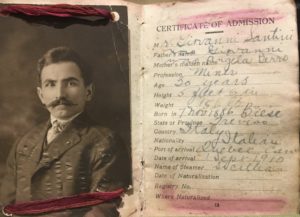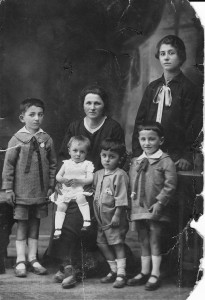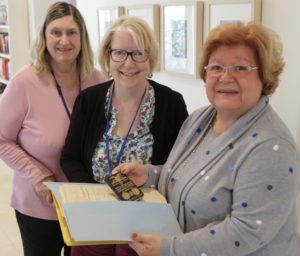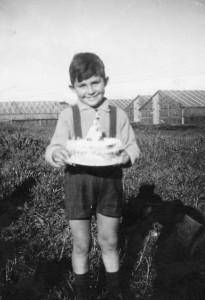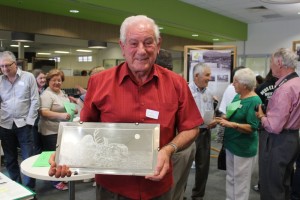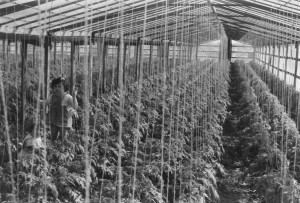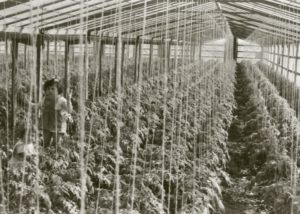The three Simeoni sisters: Delia, Bruna and Gilda
Guest blog written by Irene Zampin
My mother, Delia Simeoni, the oldest of the sisters, arrived in Australia on the 31st May 1949 with my sister Teresa who was two years old at that time. Delia married Antonio (Nico) Zampin who left for Australia 6 months before her. I, Irene, was born in 1952 and my brother, Dennis, in 1958.
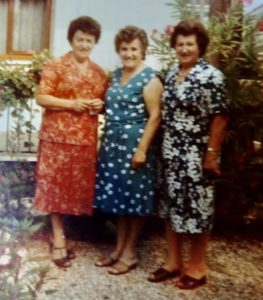
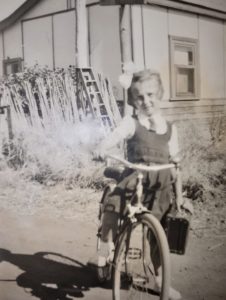
Bruna arrived in Australia on 6 January 1951 and married Bruno Basso from Asiago. They had two children, Carla and David.
Gilda, the youngest sister, followed the other two at the beginning of March 1953. She was engaged with Romeo Favaro who left for Australia before her in order to organise their marriage which was on the 14th March just after her arrival. They also had two children: Peter and Nadia.
The three sisters lived near each other in Adelaide: Bruna and Gilda used to live on Frogmore Road and Delia, on Valetta Road.
A few times during the year they would organize to bake the special Paste Italiane and Cannoncini (pastries called millefoglie and cannoli).
Before organizing this event, they had to be sure that they had enough eggs for the custard cream, that the special flavor for the custard cream was available, etc. The tools to make the cannoli came from Italy.
They used to meet at Gilda’s place. I still remember that small kitchen yet everything was organized well.
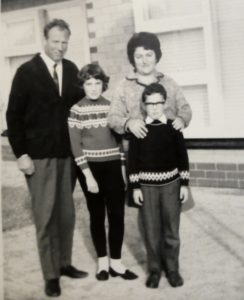
While Gilda and Mum (Delia) would make the dough, Bruna would prepare the pasticcera custard cream.
An important ingredient of the custard cream was the Spumadoro. It was a special scent that came from Italy also (I think that lots of Italians know and used this flavor in their pastries). It is still made by the Fraccaro bakery at Castelfranco Veneto. I remember that Mum would ask whoever would come from Ital y to bring her a bottle or two of Spumadoro. The scent of that flavour was great: it was a sweet scent of citrus fruits. I now discovered that its dark orange colour was due to an addition of turmeric powder.
After the dough had rested for a while, they spread the pastry with a rolling pin. I still remember that there were three layers of puff pastry and two layers of custard. I think that the hardest job was to roll the pastry. My job with Teresa was to sprinkle the top of the pastries with icing sugar. We also had to help to butter the cannoli tools before the pastry was laid.
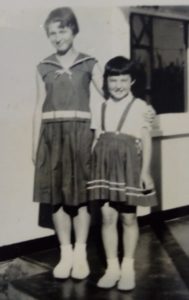
The smaller kids (Carla, David, Peter, Nadia and Dennis) used to play outside and every once in a while, they would pop in the kitchen to see the progress, especially with the custard cream! When it was ready, we all had the chance to lick a spoon of custard cream.
Those pastries were certainly delicious: they were crispy and the filling was soft and delicate.
At the end of the day they all helped to settle the kitchen and each sister would take home their share of cannoli and pastries. We all enjoyed these special cooking days – it was a pity that the pastries didn’t last long!
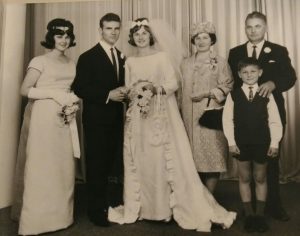
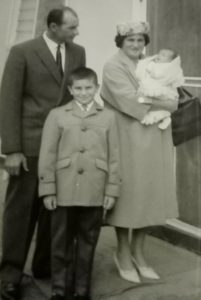
When two of the sisters left for Italy, this event stopped. Our family (Zampin) left in May 1967 leaving Teresa, married to Luigi Mazzarolo, in Australia. Gilda’s family joined us in Riese Pio X after a few months, while Bruna decided to remain in Australia and raise her children there.
Irene Zampin
8 March 2020
Le tre sorelle Simeoni: Delia, Bruna e Gilda
Blog scritto da Irene Zampin
Mia mamma, Delia (Ines) Simeoni, la più anziana delle sorelle, arrivò in Australia il 31 maggio 1949, con mia sorella Teresa che a quel tempo aveva 2 anni. Delia sposò Antonio (Nico) Zampin che partì per l’Australia sei mesi prima di lei. Io, Irene, sono nata nel 1952 e mio fratello, Dennis, nel 1958.


Bruna arrivò in Australia il 6 gennaio 1951 e sposò Bruno Basso da Asiago. Ebbero due figli: Carla e David.
Gilda, la più giovane delle sorelle, raggiunse le altre due i primi di marzo 1952. Era già fidanzata con Romeo Favaro, il quale partì prima di lei per organizzare il loro matrimonio per il 14 marzo, appena dopo il suo arrivo. Anche loro ebbero due figli: Peter e Nadia.
Le tre sorelle vivevano vicine ad Adelaide: Bruna e Gilda abitavano in Frogmore Road, e Delia in Valetta Road.
Diverse volte, durante l’anno, si organizzarono per cucinare le speciali “Paste Italiane” ed i “Cannoncini” (che in realtà erano le “Millefoglie” ed i “Cannoli”).
Prima di organizzare questo evento, dovevano essere certe di avere abbastanza uova per la crema pasticcera, che l’essenza speciale per la crema fosse disponibile, ecc. Gli stampi da forno per i cannoli provenivano dall’Italia.
Si incontravano in casa di Gilda. Ancor oggi ricordo quella piccola cucina dove tutto era ben organizzato.

Mentre Gilda e mamma (Delia) facevano l’impasto, Bruna preparava la crema pasticcera.
Un ingrediente importante della crema era lo Spumadoro. Anche quest’aroma veniva dall’Italia (penso che molti Italiani conoscessero ed usassero questa fragranza per le loro paste); viene ancora fatto dalla ditta Fraccaro di Castelfranco Veneto. Ricordo che mamma chiedeva a chiunque arrivasse dall’Italia di portarle una o due bottiglia di Spumadoro. Quel preparato era grandioso: aveva un dolce aroma di agrumi. Ho scoperto ora che il colore arancione scuro è dovuto all’aggiunta di curcuma.
Dopo aver fatto un po’ riposare l’impasto, stendevano la pasta con il mattarello. Ricordo ancor oggi che c’erano tre strati di pasta sfoglia e due di crema. Penso che il lavoro più duro fosse quello di tirare la pasta. Il mio lavoro e quello di Teresa era spargere sopra le paste lo zucchero a velo. Dovevamo anche imburrare gli stampi dei cannoli prima di deporre la pasta.
I bambini più piccoli (Carla, David, Peter, Nadia e Dennis) giocavano fuori e di tanto in tanto facevano un salto in cucina per vedere a che punto era il processo, specialmente con la crema! Quando era pronta, avevamo tutti l’opportunità di leccarne il cucchiaio.
Quelle paste erano sicuramente squisite: erano croccanti e il ripieno soffice e delicato.
Alla fine della giornata tutti aiutavamo a sistemare la cucina ed ogni sorella ritornava a casa con la loro quota di cannoncini e paste italiane . Ci divertivamo in quei giorni dove si cucinavano le paste ma sfortunatamente queste non duravano a lungo!


Tutto terminò quando due delle sorelle partirono per l’Italia. La famiglia Zampin (Delia) partì nel maggio 1967, lasciando Teresa in Australia, sposata con Luigi Mazzarolo. Dopo alcuni mesi la famiglia di Gilda ci raggiunse a Riese Pio X , mentre Bruna decise di rimanere a crescere i suoi figli.
Irene Zampin
il8 marzo 2020
